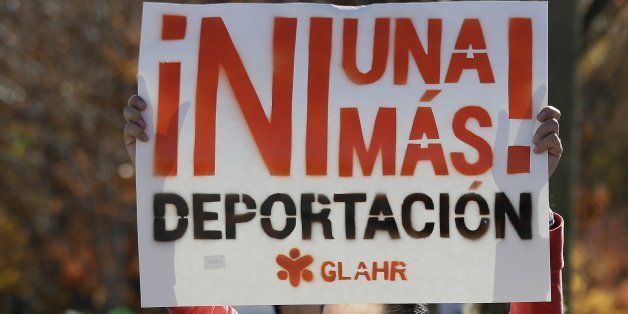
For months articles have cited statistics that President Obama is on track to deport 2 million individuals -- the same amount of people as deported in the more than 100 years between 1892 and 1997. However, a recent article in The New York Times reported that "court deportations drop[ped] 43 percent in past five years." These contradicting statistics create opposing images of the Obama administration's immigration policies: either President Obama is rightly being called "deporter in chief" or he is effectively practicing the prosecutorial discretion he promised.
As law professor Anna O. Law explains, these confusing statistics are the result of the broad use of the term "deportation," which conflates "removals" (individuals who undergo legal proceedings to remove them from the U.S.) and "returns" (individuals who are caught entering into the U.S. and returned without official legal proceedings). In fact, the Obama administration has "deported" close to 2 million individuals if you count both removals and returns. However, the 43-percent drop in removals means that many of these 2 million people are being returned while crossing the border, rather than while going about their lives in the U.S.
In part, this shift is laudable, as this 43-percent drop in removals means that fewer undocumented individuals who have spent years living in the U.S. are being torn away from the lives they have built in the U.S. Despite this decrease in removals, a large number of individuals are still being removed through programs like Secure Communities, a cooperative program between immigration officials and local police. Under Secure Communities any interaction with police brings the potential risk of deportation. While the program is intended to target criminals, the majority of individuals are still deported for minor crimes like traffic violations. In other words, undocumented immigrants living in (not entering) the U.S. are less likely to be "deported" than in previous administrations; however, those who are "deported" are more likely to be non-criminals than criminals.
Despite these new statistics, it is important to keep in mind that the social costs of deportation are not decreasing. While deportation is a severe consequence for being an undocumented immigrant, the threat and fear of deportation dramatically shapes the lives of undocumented immigrants. Undocumented immigrants know family, friends, and community members who have been deported, and they hear about deportation raids and statistics on the news. This creates a sense of fear within the undocumented community, which essentially broadens the impact of deportation beyond those who are actually deported. Thus, the increased discussion of deportation in the news has likely increased the fear of deportation, no matter what the statistics say.
This fear of deportation impacts not only undocumented immigrants but the undocumented and citizen individuals in their social network who fear being separated from their loved ones. These social ties exponentially increase the negative impact that removals have on U.S. communities. Particularly at risk are the 4.5 million U.S. citizen children of undocumented immigrants who do not understand the particularities of statistics but do know what deportation would mean for their families: separation, pain, and suffering.
As debates about immigration statistics are bound to continue, we need to keep in mind that these statistics are people. Although clear and correct statistics are no doubt useful in painting a picture, we must ask how much they matter. What is clear from these statistics is that people are being deported, and families and communities are suffering. With that in mind, isn't any number too high?
